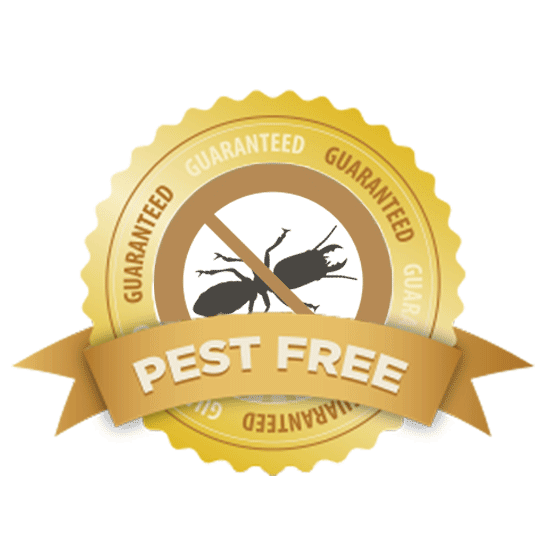A1 Bed Bug Exterminator Charlotte - Effective and Budget Friendly Services
Wiki Article
Bed Insect Treatment Malfunction: Comparing Chemical Vs. Non-Chemical Solutions
In the world of bug control, particularly when managing the consistent problem of bed bugs, the choice between chemical and non-chemical treatment services can be an essential one. Both strategies use unique benefits and drawbacks, influencing elements such as performance, safety and security factors to consider, and total price. By taking a look at the nuanced information of each method, a more clear understanding of which course to pursue in resolving a bed bug invasion can be acquired.Effectiveness of Chemical Therapies
Chemical treatments for bed pest infestations have actually been extensively recognized for their potent and quick effectiveness in eradicating these insects. When taking into consideration the effectiveness of chemical treatments, it is vital to recognize that they can supply a thorough and quick option to a bed insect trouble. Expert exterminators often depend on insecticides to target bed insects at various phases of their life cycle, including nymphs, grownups, and eggs. These chemicals usually function by interfering with the bed bugs' nerve system, causing paralysis and eventual death.Furthermore, chemical therapies have the benefit of providing residual results, meaning that they can continue to get rid of bed insects also after the preliminary application. This residual action is especially helpful in combating any kind of prospective re-infestations. Furthermore, the rapid activity of chemical treatments can bring relief to people dealing with severe bed bug invasions, allowing them to gain back control of their space quickly.
Safety And Security Interest In Chemical Solutions
When making use of chemical services for bed insect therapy is ensuring the safety and security of residents and the atmosphere,One vital element that needs cautious factor to consider. While chemical treatments can be reliable in eradicating bed insects, they may posture dangers otherwise handled properly. One of the main safety and security concerns with chemical options is the potential damage they can trigger to human wellness. Direct exposure to particular chemicals used in bed insect therapies can cause breathing problems, skin irritability, or various other damaging responses, specifically in individuals with pre-existing problems or sensitivities. Furthermore, improper application or dose of chemical pesticides can lead to poisonous deposits sticking around in the cured location, presenting long-term health and wellness risks to passengers.Moreover, the environmental influence of chemical solutions is another substantial factor to consider. Some chemicals utilized in bed insect treatments may be damaging to beneficial bugs, wild animals, and communities if they leach into the dirt or water systems. It is important to use chemical therapies deliberately, complying with security standards, and taking into consideration less harmful options to minimize these dangers and make certain the safe and efficient administration of bed insect invasions.
Benefits of Non-Chemical Strategies
Considering the potential safety and security issues and environmental effect connected with chemical services for bed bug therapy, exploring non-chemical methods presents a promising choice with numerous distinctive benefits. Non-chemical therapies are environmentally pleasant, as they do not contribute to air or water pollution, making them a sustainable selection for bug control.In addition, non-chemical remedies can be effective in targeting bed insects, consisting of hard-to-reach locations where chemical treatments might not pass through - A1 bed bug exterminator charlotte. Techniques such as warmth therapy, vacuuming, heavy steam cleansing, and cushion encasements give thorough elimination without the use of unsafe chemicals.
Limitations of Non-Chemical Treatments

Furthermore, non-chemical therapies often need multiple applications to achieve successful elimination. This can be lengthy and may not always guarantee complete removal of all bed insects and their eggs, especially in hard-to-reach or surprise places.
In addition, the success of non-chemical therapies heavily depends on appropriate application and thoroughness, which can be challenging for people without professional know-how. Insufficient application of non-chemical methods might lead to insufficient elimination, causing consistent invasions and the demand for additional therapies.
As a result, while non-chemical therapies have their advantages, it is important to recognize these restrictions and consider them when determining the most effective method for handling bed pest problems.
Expense Comparison: Chemical Vs. Non-Chemical Options
Offered the restrictions related to non-chemical treatments, an important element to evaluate in the context of bed bug monitoring is the price comparison in between chemical and non-chemical options. Chemical treatments usually include the application of insecticides by professionals, which can range from $250 to $900 per room, relying on the intensity of the invasion and the size of the area to be treated. On the other hand, non-chemical treatments like heat therapy or heavy steam can be much more pricey, with prices ranging from $1,000 to $6,000 for a whole home. While the initial cost of chemical therapies might appear reduced, multiple treatments might be required to totally eradicate the problem, possibly enhancing the general price. On the various other hand, non-chemical options might give a more environment-friendly and sustainable option, although they can be cost-prohibitive for some people. Ultimately, when taking into consideration the price of bed insect treatment alternatives, it is essential to consider the ahead of time expenditures against the performance and long-lasting sustainability of the picked technique.Final Thought

Thinking about the possible safety problems and environmental impact associated with chemical options for bed pest treatment, discovering non-chemical strategies provides an encouraging alternative with a number of distinctive benefits.Offered the limitations linked with non-chemical therapies, an important element to review in the context of click over here bed insect monitoring is the cost comparison between chemical and non-chemical choices. In comparison, non-chemical treatments like warmth treatment or vapor can be much more pricey, with expenses varying from $1,000 to $6,000 for a whole home. While the initial expense of chemical treatments may seem lower, numerous therapies may be called for to fully eliminate the invasion, possibly enhancing the overall expense.In final thought, when contrasting chemical and non-chemical bed pest therapy choices, it is important to consider performance, safety and security, advantages, constraints, and cost.
Report this wiki page